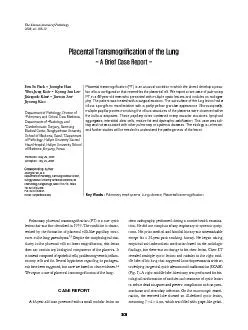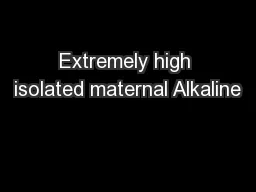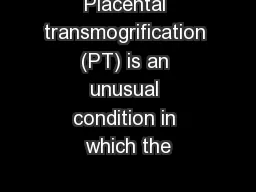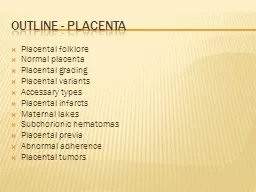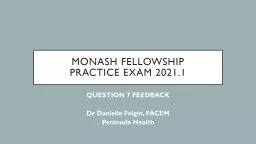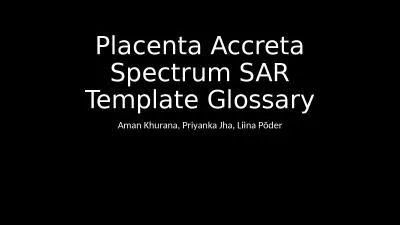PDF-Placental transmogrification (PT) is an unusual condition in which the
Author : tatiana-dople | Published Date : 2015-11-19
Heart Hospital HallymPulmonary placental transmogrification PT is a rare cysticlesion that was first described in 1979 The condition is characterized by the formation
Presentation Embed Code
Download Presentation
Download Presentation The PPT/PDF document "Placental transmogrification (PT) is an ..." is the property of its rightful owner. Permission is granted to download and print the materials on this website for personal, non-commercial use only, and to display it on your personal computer provided you do not modify the materials and that you retain all copyright notices contained in the materials. By downloading content from our website, you accept the terms of this agreement.
Placental transmogrification (PT) is an unusual condition in which the: Transcript
Download Rules Of Document
"Placental transmogrification (PT) is an unusual condition in which the"The content belongs to its owner. You may download and print it for personal use, without modification, and keep all copyright notices. By downloading, you agree to these terms.
Related Documents

